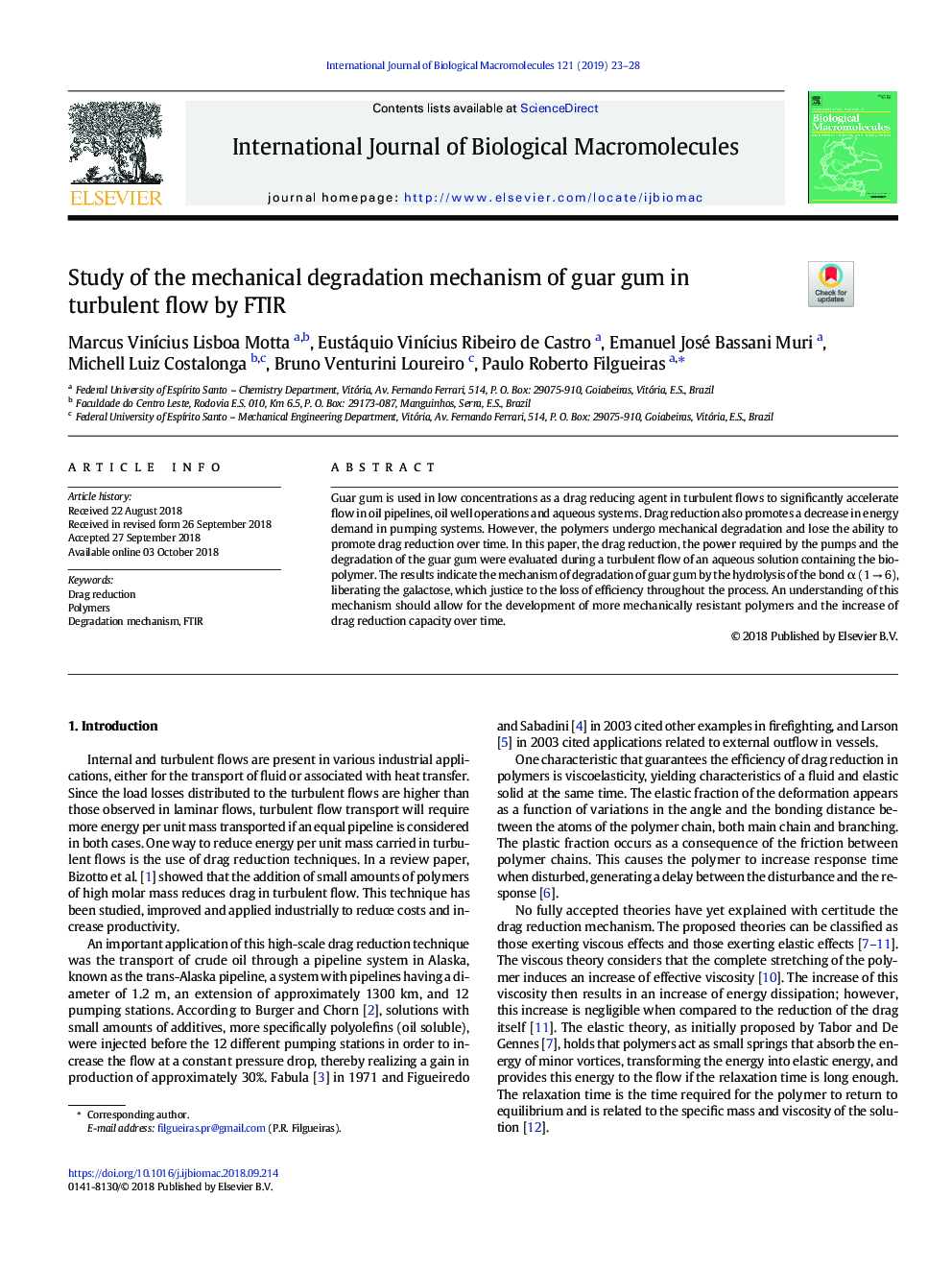| Article ID | Journal | Published Year | Pages | File Type |
|---|---|---|---|---|
| 11010943 | International Journal of Biological Macromolecules | 2019 | 6 Pages |
Abstract
Guar gum is used in low concentrations as a drag reducing agent in turbulent flows to significantly accelerate flow in oil pipelines, oil well operations and aqueous systems. Drag reduction also promotes a decrease in energy demand in pumping systems. However, the polymers undergo mechanical degradation and lose the ability to promote drag reduction over time. In this paper, the drag reduction, the power required by the pumps and the degradation of the guar gum were evaluated during a turbulent flow of an aqueous solution containing the biopolymer. The results indicate the mechanism of degradation of guar gum by the hydrolysis of the bond α (1â¯ââ¯6), liberating the galactose, which justice to the loss of efficiency throughout the process. An understanding of this mechanism should allow for the development of more mechanically resistant polymers and the increase of drag reduction capacity over time.
Keywords
Related Topics
Life Sciences
Biochemistry, Genetics and Molecular Biology
Biochemistry
Authors
Marcus VinÃcius Lisboa Motta, Eustáquio VinÃcius Ribeiro de Castro, Emanuel José Bassani Muri, Michell Luiz Costalonga, Bruno Venturini Loureiro, Paulo Roberto Filgueiras,
